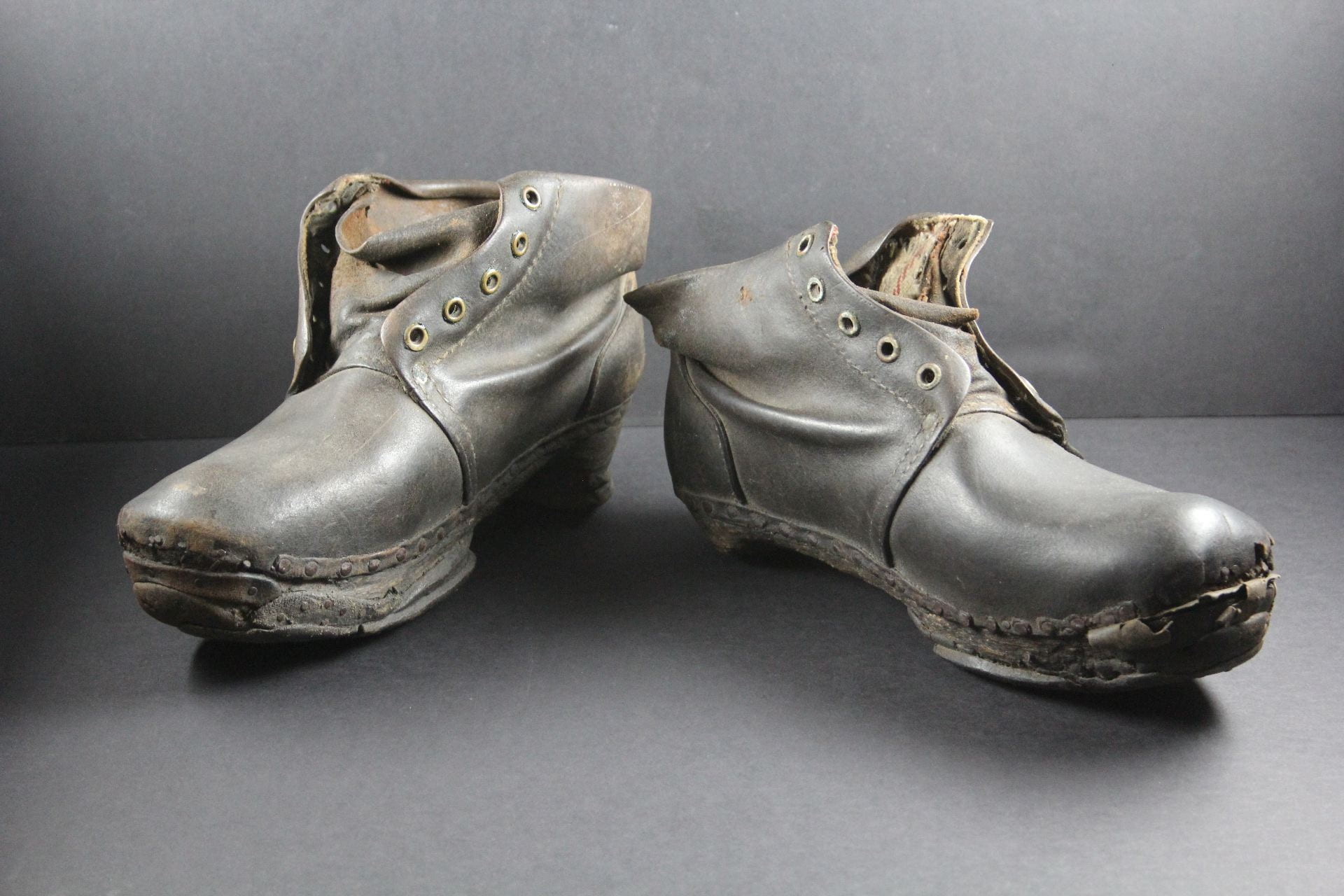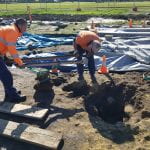Convicts wore clothes. A shocking fact I know. Sometimes they wore clothes that had been imported from other places (such as the British Isles). Sometimes they wore clothes that had been manufactured locally. Most of the time they wore a uniform. Occasionally a poor state of supply meant that they did not. It’s hard to deal in absolutes when you write history. The longevity of Port Arthur (for those who are not paying attention – 47 years) means that the prisoners at the penal station experienced most of these situations, the type and quality of their clothing and footwear entirely dependent upon supply chains, regulations and economy.
One of the most important things about the convict uniform was that it was designed to rapidly convey the ‘degraded’ status of the person within it. This was most noticeable in a place like Hobart or Sydney, where a gang of yellow-clad prisoners clanking around would have stood out like the proverbial. This form of visual classification extended to road gangs, penal stations, probation stations, female factories, hiring depots – basically the places where men and women were incarcerated. At such places there could be a variety of clothing on display, each supposedly conveying the class of convict. In the 1830s male prisoners at Port Arthur wore a mix of three uniforms: all-yellow (for the general population), the ‘magpie’ – a parti-coloured uniform of black and yellow (for those undergoing punishment – see below), or an outfit of grey or blue (for the well-behaved – see below).

Not historically accurate: convicts generally had heads, legs and hands (image supplied by Michael Smith, PAHSMA)
From the 1840s convict clothing began to be marked by their prisoner identification number, meaning that the authorities could keep track of items issued to the convicts. Grey continued to be reserved for well-behaved convicts who had undergone 2/3 of their sentence. A visitor to Port Arthur in 1842, David Burn, recalled seeing convicts in the church:
…their yellow raiment (or half-black, half-yellow), with P.A., and their respective numbers stamped in various parts
This type of clothing continued at Port Arthur until the close of settlement, though the source and quality of the supply constantly varied. The convicts’ kit included a new jacket, trousers, waistcoat, shirt, pair of boots and cap, issued by the Ordnance Department every six months. New arrivals at a station would have their old clothing taken into store and the uniform issued. William Gates, transported to Van Diemen’s Land in 1840, recollected upon his arrival at Sandy Bay probation station:
We now had to exchange our clothing for the convict’s suit, which consisted of trousers and jacket, made of a grey kind of cloth, coarser and rougher even than common carpeting, and which permitted the wind to circulate through its interstices almost as freely as though a sieve – a striped cotton shirt whose fabric was correspondingly as coarse…and a pair of thick, clumsy shoes, without socks.
The Ordnance Department usually shipped clothing from the British Isles. This could lead to delays, such as in 1840 when Port Arthur’s Commandant, Charles O’Hara Booth, reported that over 600 men needed new trousers. Though some stations made their own, uniforms were generally not made at Port Arthur. Convict tailors instead repaired hundreds of items every year, or supplied clothing (at cost) to the officers. From the 1860s, as the station’s population began to dwindle, convicts did start to make uniform items: jackets, trousers (including with a button fly for fitting chains), shirts, braces, caps, belts and even pads for wearing chains. Though the material to produce these items was mostly imported, from 1850 the Cascades Female Factory (in Hobart) did begin to produce cloth on a small scale.
Footwear was another essential part of the uniform which attracted a great amount of discussion. Like clothing, it was variously supplied from the British Isles or produced by convicts locally. Similarly, the leather required to produce the footwear was both imported and locally-sourced. There was a preference for the latter, with the imported leather and footwear often attracting complaints about its poor quality. On at least two occasions Port Arthur operated its own tannery. From 1833 the penal station began to produce shoes and boots on a large scale, supplying footwear for the greater Convict Department. It was generally accepted that boots were the favoured issue, with shoes deteriorating at a faster rate. The convict shoemakers produced a range of footwear: from the boots required by the prisoners, to riding boots, wellingtons, ladies and children’s shoes and slippers.
To bring it back to the workshops, all this tailoring and shoemaking took place on this particular site. Though our area is unlikely to encompass the site of the tailor’s shop, it does cover the site of the 1830s-40s shoemakers. Like the foundry, we will be paying careful attention to the form of the shoemaking structure and the distribution and type of artefacts. This will help tell us more about the labour processes and footwear that was produced at the station. Evidence of the footwear and uniforms will be in the form of pieces of leather, shoenails, eyelets and wooden four-hole buttons, used on both trousers and jackets. It is incredibly rare to find preserved cloth. Some examples of clothing have been found in non-archaeological contexts, including a number of shirts and the uniform pieces held by Port Arthur (shown above).




While this whole post is really rather fascinating, I’m now awfully fixated on the fact that the convicts were not issued socks (really not something I’d previously considered).
Hi SW. I would certainly have hated it. However, manufacturing returns for Port Arthur do list socks being made occasionally – I do think that William Gates was over-egging the pudding somewhat. Then again, in the 1840s the Commissariat was having a real problem keeping up with the rapidly growing number of convicts in the colony, so I expect getting socks was probably a privilege and not a right.
Exaggerating the facts all for an engaging narrative? Surely not! But then again, with Gates (per Buffalo?) being charged with piratical invasion, and not being the average sort of convict, I suppose anything is possible.
No comment
However, according to the Penitentiary sick reports, they were issued with stockings.
From what I’m uncovering in the 1860s & 70s conduct and labour records Richard the tailoring was happening at the Separate Prison. Tas Papers D 22 is even detailing the amount and type of clothing individual men are making there. All very interesting!
Hi NKR. Indeed, the privilege of stockings!
Woolen ones at that!
Shoes, machine stitched with eyelets first used in the 1890s. Port Arthur, I think not. Commonly worn by electricity workers around WW2.
Ha! Brilliant. That’s the cover of our new book! Which is all about convicts. I will pass this on to the Collections’ manager…